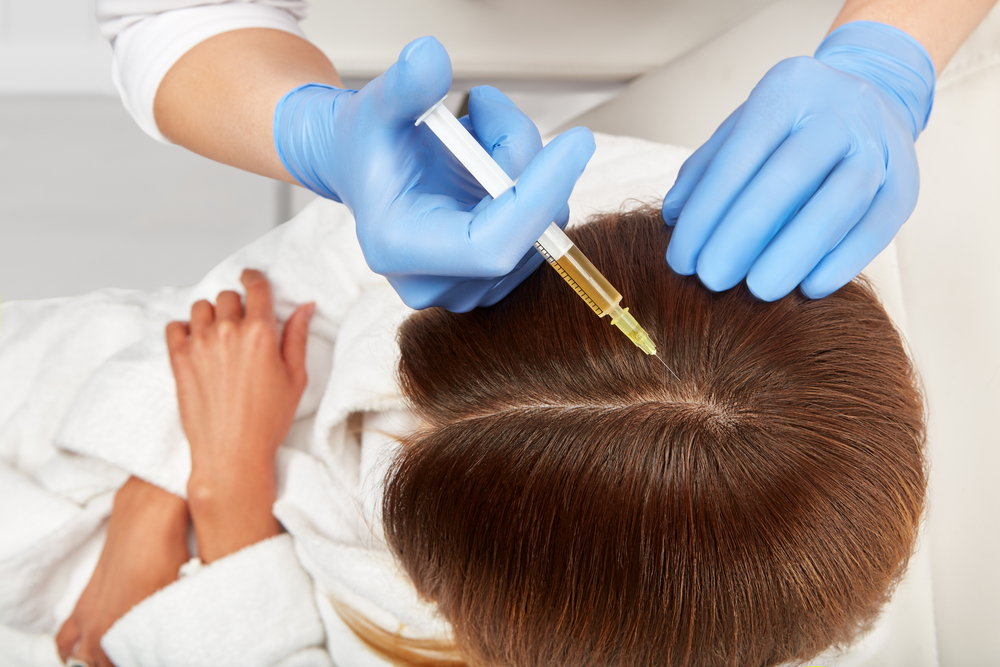Hair loss can be a distressing experience, even when it’s in the early stages. Many individuals with mild thinning seek effective, non-invasive solutions to restore their hair’s density and confidence. PRP hair treatment in Dubai , a procedure that uses the body’s natural healing properties to stimulate hair growth. But is it truly worth considering for mild hair loss? This article explores the science, benefits, and considerations to help you make an informed decision.
What is PRP Hair Treatment?
PRP (Platelet-Rich Plasma) therapy is a medical treatment that harnesses the growth factors in a patient’s blood to rejuvenate hair follicles. The process involves drawing a small amount of blood, processing it to concentrate the platelets, and injecting the plasma into the scalp. The growth factors in PRP help strengthen weak follicles, prolong the hair growth cycle, and encourage new hair development.
How PRP Works for Mild Hair Loss?
Mild hair loss typically involves thinning rather than extensive baldness, making it an ideal stage for early intervention. PRP works by:
- Stimulating dormant follicles – Encourages weak or inactive hair follicles to enter the growth phase.
- Improving blood circulation – Enhances nutrient delivery to hair roots, promoting healthier strands.
- Reducing miniaturization – Slows down the shrinking of follicles, a common issue in pattern hair loss.
Since mild hair loss hasn’t yet progressed to significant baldness, PRP may yield better results compared to advanced stages where follicles are no longer viable.
Benefits of PRP for Early-Stage Hair Thinning
Non-Surgical and Minimally Invasive
Unlike hair transplants, PRP doesn’t require incisions or downtime. The procedure is performed in a clinical setting with minimal discomfort, making it a convenient choice for those seeking a low-risk solution.
Natural and Safe
Since PRP uses the patient’s own blood, there’s no risk of allergic reactions or synthetic additives. It’s a biologically compatible treatment that supports the body’s natural healing mechanisms.
Gradual but Sustainable Results
PRP doesn’t provide instant results like some topical treatments. Instead, improvements appear gradually over several months, with many patients noticing thicker, healthier hair after a series of sessions.
Complements Other Treatments
For individuals already using topical minoxidil or low-level laser therapy, PRP can enhance their effectiveness. It works synergistically with other treatments to maximize hair retention and regrowth.
Is PRP Effective for Mild Hair Loss?
Clinical studies suggest that PRP can be beneficial for early-stage androgenetic alopecia (pattern hair loss). Research has shown:
- Increased hair density and thickness after multiple sessions.
- Prolonged anagen (growth) phase of hair follicles.
- Reduced shedding and breakage.
However, results vary depending on individual factors such as age, genetics, and the underlying cause of hair loss. Those with mild thinning due to stress, hormonal changes, or early genetic predisposition tend to respond better than individuals with advanced baldness.
What to Expect During the Procedure?
A typical PRP session follows these steps:
- Blood Draw – A small sample is taken from the arm.
- Centrifugation – The blood is spun to separate platelet-rich plasma.
- Injection – The concentrated PRP is injected into thinning areas of the scalp.
The process takes about 30-60 minutes, and most patients require 3-6 sessions spaced a month apart for optimal results. Maintenance treatments may be recommended every 6-12 months.
Potential Limitations and Considerations
While PRP is promising, it’s not a miracle cure. Some factors to keep in mind:
- Not a Standalone Solution for Advanced Hair Loss – If follicles are completely inactive, PRP may not revive them.
- Requires Consistency – Multiple sessions are needed for noticeable improvements.
- Results Vary – Some patients see significant regrowth, while others experience only modest thickening.
Conclusion
PRP therapy presents a viable solution for those with mild hair loss seeking a non-surgical, natural treatment. By stimulating follicles and improving scalp health, it can help maintain and enhance hair thickness when used at the right stage. While not a universal cure, its benefits make it a compelling option worth exploring for early hair thinning.






Comments